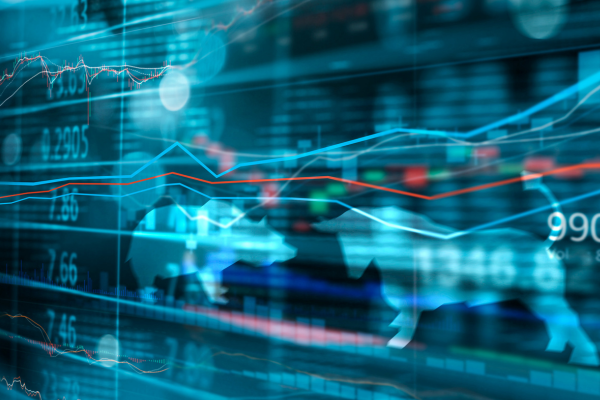
The S&P 500 calmly added +3.11% in July, continuing its new bull market run from the lows of last October. With the exception of a few days around the regional bank failures, it’s been a market rally characterized by markedly subdued volatility.
For example, the CBOE VIX index, sometimes referred to as Wall Street’s “Fear Index,” touched 12.91 in June — its lowest level since before the pandemic. Promising data showing a decline in inflation, a still healthy labor market, and a steady U.S. consumer demand are all legitimate drivers of bullish sentiment.
As we’ve discussed before, however, this market rally has also been characterized by an unusual level of concentration at the top — with almost all of this year’s gains being attributed to the seven largest technology-focused stocks in the index. We would encourage investors to remain cognizant of the cautionary signals flashing yellow in this economy as well, including a deeply inverted yield curve, deteriorating leading indicators, and increasingly stretched valuations in U.S. equities.
Our outlook for markets and the economy remains muddled, with no shortage of conflicting signals and uncertain potential developments. In an environment like this we are encouraging investors to stick with some of the key, evidence-based fundamentals of investing.
Remain broadly diversified and balanced across asset class, geography, and industry.
Last year’s losers can often be this year’s biggest winners, and trends can reverse rapidly. We’ve seen this in 2023 with the dramatic change of fortunes for technology shares, which led the market lower in 2022, and energy shares — 2022’s biggest winner has been a lagging sector in 2023.
With elevated uncertainty, we would encourage investors to remain broadly balanced and avoid any over-concentrations in any one sector or area of the market, as sentiment can reverse quickly.
Don’t take market consensus for granted.
The 19%+ gain for the S&P 500 in 2023 has been driven in large part by the markets’ optimistic view around the Fed’s ability to contain inflation without serious economic disruption, a path of declining interest rates by later this year, and a vision of increased efficiencies driven by artificial intelligence.
Investors should remember that sentiment on any of these issues can — and often do — change rapidly, and the risk of a correction increases the further markets go up. Considering raising cash for any near-term needs at these elevated levels, and avoiding any changes based on excitement or a fear of missing out would be advised.
Ensure your focus and perspective are consistent with your investment horizon.
For many investors, their investment horizon is measured in decades — and it still has at least a few decades left to go. For these long-term investors, bull markets, bear markets, boom times and recessions will all be a part of their investing journey.
We would encourage these investors not to spend too much time and attention on the daily financial news, unless it’s just for enjoyment. Rather, we’d suggest continuing to focus on the decisions and actions shown empirically to have the greatest impact on investment outcomes — ensuring equity allocations match time horizon, remaining broadly diversified and balanced, remaining disciplined to a written investment policy plan, and minimizing fees and expenses where possible.
For investors with short-term accounts or near-term needs, increases in interest rates have resulted in compelling options for these accounts as well, with some money markets and CDs yielding over 5%.
As always, New Covenant Trust Company is here to answer any questions and help you navigate these challenging economic times. Please don’t hesitate to reach out to us at 800-858-6127, Option 6.
Market Updates at a Glance
The Dow Jones Industrial Average (DJIA) finished July at 35,559, up +3.35% for the month, up +7.28% so far for the year. The S&P 500 closed July at 4,589, up +3.11% for the month, up +19.52% year to date. The NASDAQ Composite gained +4.05% in July, up +37.07% so far in 2023. Small-company stocks as measured by the Russell 2000, ended July up +6.06%for the month, up +13.74% so far year to date. Energy (+8.28%) was the best-performing sector in July.
